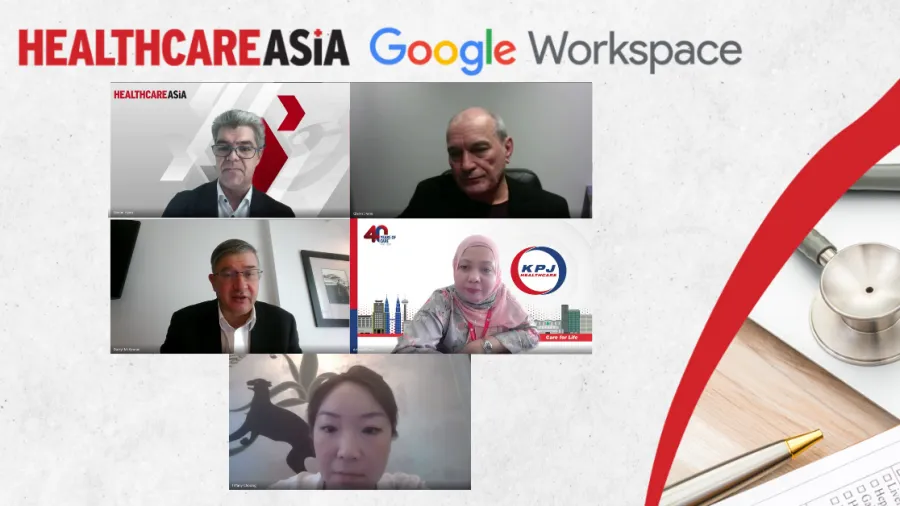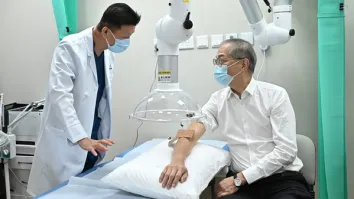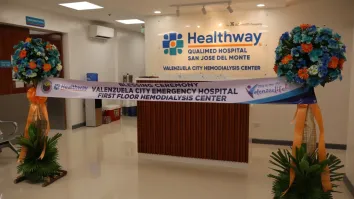
Healthcare legacy systems costs institutions millions in data breaches
Automation can secure patient data, ease frontliner burnout, and improve patient care.
Since pre-pandemic times, the healthcare industry has been known for being cautious about adapting new technology and embarking on digital transformation. That attitude slightly shifted when COVID-19 spread like wildfire across the world, forcing clinicians to conduct online consultations, and more patients to expect medical care in a more flexible format.
Aside from patient care, the industry is still a long way from a definite transformation and continues to face challenges like secure patient data, innovation, and frontliner support.
The High Cost of Cyber Breaches
Legacy systems in network infrastructure, hardware, and software are still prevalent across the industry, perpetuating issues related to maintenance, incompatibility with modern cloud-based solutions, weak security, and poor employee collaboration and patient care.
“Healthcare is the number one industry with the highest cost of a security breach,” said Tiffany Choong, Solutions Value Advisor for JAPAC at Google Cloud, adding that the industry suffers an average of $9.2m yearly in losses due to data breaches in its outdated systems.
Choong recently presented at a webinar themed CXO Conversations Transforming Healthcare, jointly organised by Healthcare Asia magazine and Google Workspace. "The high cost is due to the valuable data that sits with healthcare companies; it's one of the top targets for hacking files that contain patient names, birth dates, prescription information, and the high amount of settlements associated with lawsuits," she explained during her presentation.
Among the entry points for data breaches, she said, are devices used in monitoring biodata, dispensing drugs, and similar equipment. Whilst these don’t contain patient data, they also do not feature any security layers. Once hackers gain access to these devices, they have network access and can install ransomware.
With most funds focused on prioritising patient care, budget constraints also limit healthcare institutions from training staff in cybersecurity best practices.
To this point, KPJ Healthcare Chief Corporate Officer Ariesza Noor said, “healthcare workers are already overburdened” without the strain of changing processes that is part of a digital transformation journey. However, she agrees that “there is a need to retrain people.”
KPJ Healthcare is a system of 29 hospitals throughout Malaysia. “We are a 40-year-old brand, so we've got hospitals that are 40 years old with various systems in place,” Noor added. “You're talking about 16,000 employees who're going to be impacted by this change.”
Glenn Irvine, Head of Cloud and Emerging Technologies at Dialog Information Technology, added that “training and developing staff are always going to be important within adopting any new technology or any new methodology.” Dialog is an Australia-based IT services and solutions provider.
Customers on Cloud
“The pandemic has accelerated the need for a flexible and secure hybrid platform as teams become more distributed and more people work from home,” said Choong. “We have more endpoints that become vulnerable to security incidents, we also have the need for people to still be able to interact as effectively with their team members.”
New platforms like Google Workspace feature security capabilities such as multifactor authentication and single sign-on to ensure that medical staff feel supported whilst protecting patient data and improving healthcare services.
At present, the process of assigning patients to caregivers is not optimised for distance or expertise, Choong said. With automated calendars and forms, staff can proactively create a way to know where caregivers are located, their schedule, and expertise.
This data, stored on the secure drive, can be shared among different medical staff to “work together in real time and in a secure way. Administrators can use this data to reduce lead times for planning surgeries or other appointments.”
As examples, Choong cited Google Cloud’s customers at the Mayo Clinic, who were able to reduce treatment planning time for patients with the help of more efficient data utilization. Nurses are also better able to assist cancer patients through automated workflows and planning.
Citing a Google report, she revealed that employees using Google Workspace complete 36% more of their core work on average and spend 24% less time on routine administrative tasks such as obtaining routine approvals, decision making and planning. The efficiencies brought about by more streamlined search, document sharing, and virtual collaborations.
Google Glass is also getting a revival in terms of boosting healthcare capabilities.
“We did a proof-of-concept with the trauma ward in a hospital in Australia,” said Irvine, where Google Glass enabled specialists in one location to “give advice in the ear of that GP” (general practitioner) during an operation in a remote site.
Happy Staff, Happy Patients
Addressing the administrative aspect of running a healthcare establishment could potentially ease the burden on staff. This is an important point given that a high burnout rate among medical staff could lead to more human error and, in turn, to security issues and mistakes in patient care, Choong said.
Irvine echoed that “one of the things we've seen in healthcare in recent times is the burnout rates and the high tempo of work. Anything that can reduce manual tasks that frontline staff have to deal with” is a welcome change. He added that “when bringing in technologies and modernising, one of the main things we need to ensure is securing that data and providing the services needed by the front line.”
A holistic view and keeping the eyes on the prize are keys when embarking on the digital transformation journey, Noor said. “We're a fairly conservative industry. Digitisation is a value add. Doing that will help us provide a better patient experience.”
For healthcare institutions that are considering starting their digital transformation journeys, Darryl McKinnon, Head of Google Workspace in APAC, recommends that executives to “talk to peers that have done it before and learn from them.”



















 Advertise
Advertise








